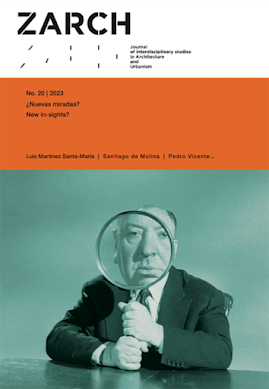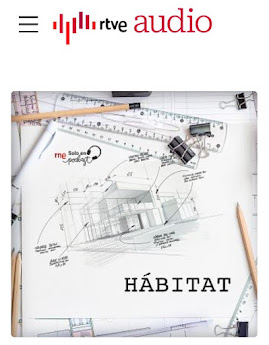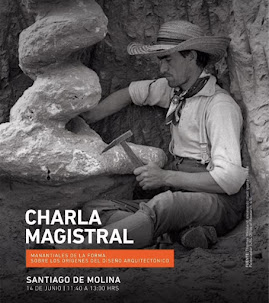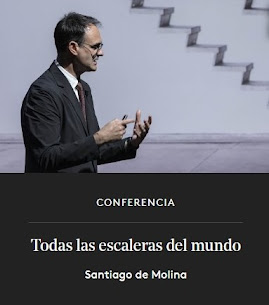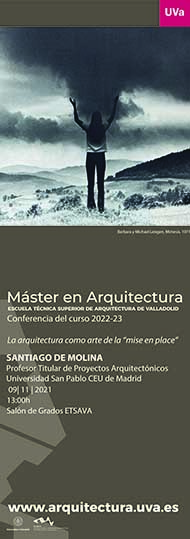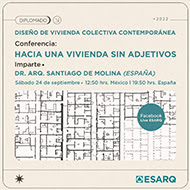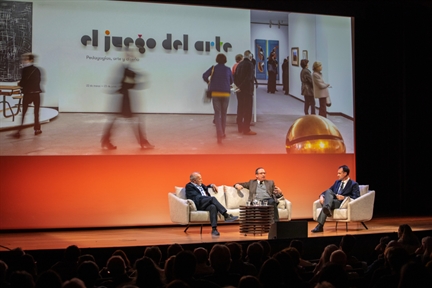
En Grecia, pero puede encontrarse el mismo fenómeno en varios lugares del Mediterráneo y en Latinoamérica, muchas edificaciones rurales construidas de modo precario con estructura de hormigón “rematan” sus cubiertas dejando asomar los armados. Ese acero que asoma, como los pelos de un niño despeinado, es un signo optimista de una economía familiar que confía en poder ampliar la casa hacia arriba en un futuro nunca inmediato (1). Las armaduras en espera son allí más que un doble símbolo y hacen las veces de antena del futuro.
Este tipo de signos aparece de otros modos en cada disciplina. En la antigua iconografía cristiana existía una forma de representación denominada “etimasía”, en la que una simple silla vacía, de la que colgaba un manto o en ocasiones cercana a una cruz, representaba un tipo de espera no muy distinta. Esa silla era la nítida representación de alguien que no estaba, de alguien que no había llegado todavía. Ese hueco es un espacio latente que en absoluto equivale a la nada y a la desocupación. Todo lo contrario, alude a una expectación.
Esta misma forma de espera cruza el campo de la arquitectura a varios niveles: la arquitectura, como conjunto de profesionales y de obras, está a la espera de esa construcción que ofrezca indicaciones sobre cómo enfrentarse al problema de la sostenibilidad (o el de la diversidad, o el colonialismo), dependiendo de cada momento histórico. Cada territorio, cada solar, cada lugar, está a la espera de una obra de arquitectura que le ayude a comprenderse, a mirarse con ojos nuevos y a darle sentido. Esta actitud de espera es tan propia de la arquitectura que puede decirse que un arquitecto es viejo precisamente cuando toma consciencia de no llegar a ver ya esas obras. Cuando se hace consciente de que no será él o ella quien dé cumplimiento a ese tipo de esperas. La espera, como vemos, es propia de la juventud.
Menos mal que estas fechas, por cierto, están regidas bajo este mismo principio de la esperanza.
(1) El término griego de este fenómeno es “panosikoma”. En México se llaman "varillas de la esperanza" porque si se dejan asomando la normativa permite ampliar la edificación con una nueva planta. Debo este último dato a Arturo Franco. Otra explicación a este fenómeno es que los propietarios no pagan los impuestos correpondientes al municipio gracias a no haber concluido la "obra". Este dato es debido a Sergio A. Fernández.
In Greece, though the same phenomenon can be found in various parts of the Mediterranean and Latin America, many rural buildings, precariously built with concrete structures, “top off” their roofs by leaving rebar exposed. That steel, sticking out like the messy hair of a child, is an optimistic sign of a family economy that trusts it will someday expand the house upward though never in the immediate future (1). Those waiting reinforcements are more than just a dual symbol; they act as antennas for the future.
Similar signs appear in other disciplines. In ancient Christian iconography, there was a form of representation called “etimasia,” where a simple empty chair, draped with a mantle or sometimes placed near a cross, represented a kind of waiting not so different. That chair was the clear representation of someone absent, someone who had not yet arrived. That empty space is a latent presence, far from being nothingness or mere vacancy. Quite the opposite, it speaks of anticipation.
This same form of waiting crosses into architecture at various levels. Architecture, as a body of professionals and works, waits for that building that will provide guidance on how to address issues such as sustainability (or diversity, or colonialism), depending on the historical moment. Each territory, each plot, each place awaits an architectural work that will help it understand itself, see itself with new eyes, and give it meaning. This attitude of waiting is so intrinsic to architecture that one might say an architect grows old when they realize they will no longer see such works come to fruition—when they become conscious that they won’t be the one to fulfill those kinds of expectations. As we see, waiting is a quality of youth.
Fortunately, these days, by the way, are governed by this same principle of hope.
(1) The greek term for this phenomenon is “panosikoma”. In Mexico, they are called "rods of hope" because if they are left exposed, the regulations allow for the building to be expanded with an additional floor. I owe this first piece of information to Arturo Franco. Another explanation for this phenomenon is that homeowners avoid paying the corresponding municipal taxes by not finishing the "construction." This insight is thanks to Sergio A. Fernández.























